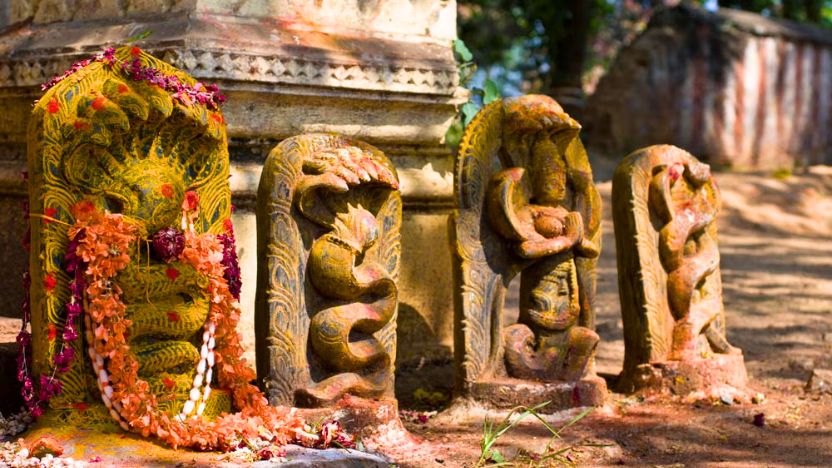Naga Panchami, observed this year on Tuesday, 29 July, is a day steeped in ancient wisdom, deep devotion, and profound connection to both Earth and ancestry. Across India, devotees come together to honour the Naga Devatas, the sacred serpent energies believed to guard the realms of land, water, memory, and the subtle spiritual worlds.
On this auspicious day, devotees lovingly offer milk, turmeric, flowers, and sweets to snake idols, often crafted from silver, wood, stone, or even drawn as Rangoli at thresholds and doorways. In rural regions, anthills - the natural abodes of Nagas are revered as divine, and people pour milk and incense offerings into them with the hope of protection, peace, and blessings.
But Naga Panchami is more than ritual - it’s a deeply spiritual moment that invites us to remember our ancestors, reconnect with Earth, and offer reverence to life forms we often fear or overlook. It’s said that by honouring the Naga Devatas, one can be freed from Sarpa Dosha or Kaal Sarpa Dosha - the afflictions in one’s horoscope that may hinder progress in life, relationships, or health.
The sacred stories behind Naga Panchami
The roots of Naga Panchami run through our Puranas and epics, where serpents are not just beings, but symbols of cosmic power and timeless memory.
One popular legend takes us back to the Mahabharata, where the powerful serpent king Takshaka kills King Parikshit. In response, his son Janamejaya conducts a massive Sarpa Yagna to destroy the entire Naga race. But at the peak of this fiery ritual, the wise sage Astika Rishi intervenes, stopping the Yagna and saving the serpents. Naga Panchami marks the day of this divine intervention - a call for balance, compassion, and non-violence.
Another tale links the festival to Lord Krishna, who subdued the poisonous serpent Kaliya that was polluting the Yamuna River. Krishna’s victory over Kaliya symbolises the triumph of dharma over chaos and the purifying power of divine grace.

The twelve forms of Naga devatas
Did you know there are twelve sacred manifestations of Naga energy? These are:
Ananta, Vasuki, Shesha, Padma, Kambala, Karkotaka, Ashvatra, Dhritarashtra, Shankhapala, Kaaliya, Takshaka, and Pingala.
Each form represents not just a divine presence but also aligns with cosmic cycles and the twelve segments of the lunar calendar.

Why Naga Panchami matters?
Spiritual Protection: Worshipping Naga Devatas is believed to protect one from unseen karmic blocks, especially Sarpa Dosha in astrology.
Overcoming Fear: Fasting and praying on this day is said to help individuals conquer the fear of snakes and, symbolically, the fear of the unknown.
Respect for All Life: The festival reminds us of our sacred duty to honour all living beings even those we might fear, because everything in creation is connected.
Ancestral Respect: In many spiritual lineages, Naga Panchami is also a day to remember ancestors. Just as serpents burrow deep into the Earth, our ancestral roots run deep in our soul.
How devotees celebrate?
In many homes, milk is offered to serpent idols, while prayers and mantras are recited with deep devotion. In temples, lamps are lit, incense burns, and Bhagavata stories are shared, keeping ancient traditions alive. Drawing serpent rangolis with natural colours is another beautiful ritual that invites divine presence into the household.
In some places, digging the Earth is strictly avoided on this day - as it is believed to disturb the Nagas and bring misfortune. Women especially observe this day with devotion, praying for the protection of their brothers, tying it with the bond of love and safeguarding.
Naga Panchami is a reminder that divinity exists not just in the heavens but beneath our feet, in the soil, in the rivers, and in the quiet presence of the serpent.
Remember that the Earth herself listens through the coils of the Naga Devata who guards her mysteries.
Source / Image Credit : pujayagna , Isha Foundation, Prokerala, Om Spiritual Shop
